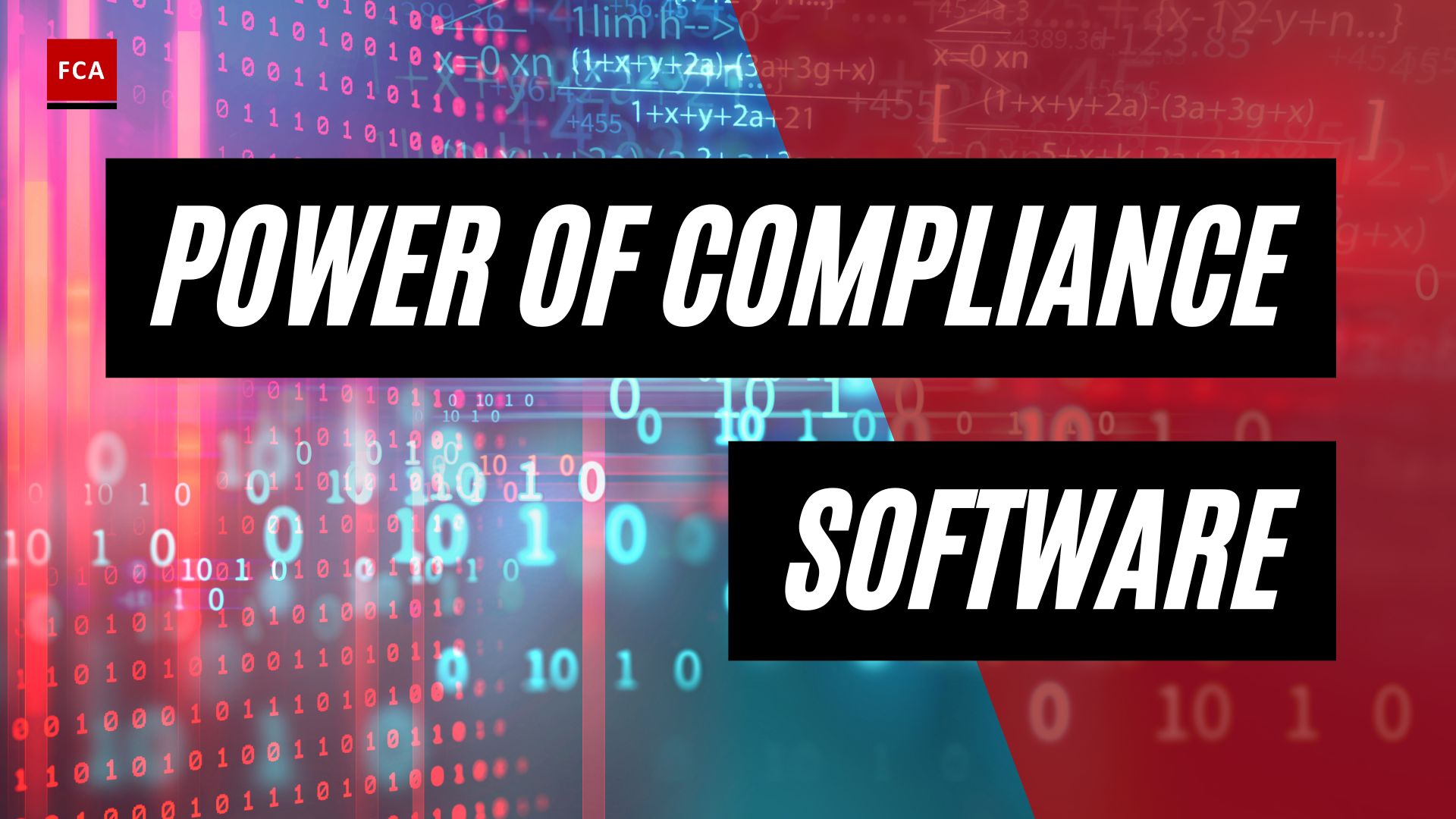Understanding FATF Recommendations
To effectively combat money laundering and terrorist financing, it is crucial to understand the recommendations provided by the Financial Action Task Force (FATF). Let’s explore an introduction to FATF and the history and mandate behind it.
Introduction to FATF
The Financial Action Task Force (FATF) is an intergovernmental organization established in 1989 by the G7 countries. Its primary objective is to set international standards and promote the implementation of legal, regulatory, and operational measures to combat money laundering, terrorist financing, and other threats to the integrity of the international financial system.
FATF plays a vital role in facilitating cooperation and coordination among countries to combat illicit financial activities. It operates on a global platform, bringing together representatives from over 200 jurisdictions and international organizations to develop and promote policies to fight financial crime.
History and Mandate of FATF
FATF was initially formed in response to the growing concern about the impact of money laundering on the global economy. However, following the tragic events of the September 11 attacks in the United States, FATF expanded its mandate to include the fight against terrorist financing. This expansion allowed FATF to address the evolving challenges posed by financial crimes associated with terrorism.
In addition to money laundering and terrorist financing, FATF’s mandate was further expanded in 2012 to include the prevention of the financing of the proliferation of weapons of mass destruction (White & Case). This expansion reflects the global recognition of the need to address the financing of activities that pose a significant threat to international security.
FATF’s recommendations serve as the cornerstone for countries’ efforts to combat money laundering, terrorist financing, and proliferation financing. These recommendations provide a comprehensive framework that guides countries in establishing effective anti-money laundering and counter-terrorism financing (AML/CFT) systems. The recommendations cover a wide range of areas, including customer due diligence, reporting of suspicious transactions, international cooperation, and more.
By adhering to the FATF recommendations, countries can enhance their AML/CFT frameworks and bolster their ability to detect, prevent, and deter financial crimes. It is important for professionals working in compliance, risk management, anti-money laundering, and anti-financial crime to have a solid understanding of these recommendations to ensure effective implementation in their respective jurisdictions.
In the next sections, we will dive deeper into the FATF recommendations and explore their implications in combating money laundering and terrorist financing.
FATF’s Role in Combating Money Laundering
To effectively combat money laundering and terrorist financing, the Financial Action Task Force (FATF) plays a vital role in setting international standards and promoting effective implementation of anti-money laundering and counter-terrorism financing measures.
Money Laundering and Terrorism Financing
Money laundering is the process by which illegally obtained funds are made to appear legitimate. It involves three stages: placement, layering, and integration. By disguising the illicit origin of funds, money laundering enables criminals to enjoy the proceeds of their illegal activities without arousing suspicion (FATF Recommendations for Money Laundering).
Terrorism financing, on the other hand, involves providing financial support or resources to individuals or organizations engaged in terrorist activities. This funding enables terrorists to carry out their operations, recruit members, and spread their ideologies (FATF Recommendations for Terrorist Financing).
Expansion of FATF’s Mandate
FATF was established in 1989 by the G7 countries to combat money laundering. However, following the tragic events of the 9/11 attacks in the United States, FATF expanded its mandate to cover the issue of terrorist financing as well. This expansion allowed FATF to address the financial aspects of terrorism and strengthen the global efforts to combat this threat (White & Case).
In addition to combating money laundering and terrorist financing, FATF further expanded its mandate in 2012 to include the issue of proliferation financing. This development aimed to address the financing of activities related to the proliferation of weapons of mass destruction. By incorporating this aspect into its mandate, FATF contributes to global efforts to prevent the financing of such dangerous activities (White & Case).
By setting international standards and promoting the implementation of robust anti-money laundering and counter-terrorism financing measures, FATF plays a crucial role in safeguarding the integrity of the global financial system. The recommendations provided by FATF serve as a comprehensive framework for countries to develop and enhance their own anti-money laundering and counter-terrorism financing regimes. These recommendations cover various aspects, including risk assessment, customer due diligence, suspicious transaction reporting, and international cooperation (FATF Recommendations Explained).
Understanding the role of FATF in combating money laundering and terrorist financing is essential for professionals working in compliance, risk management, anti-money laundering, and anti-financial crime. By adhering to the FATF recommendations and implementing effective anti-money laundering and counter-terrorism financing controls, individuals and organizations can contribute to the global fight against financial crime and ensure the integrity of the global financial system.
Overview of FATF Black and Grey Lists
As part of its efforts to combat money laundering and terrorist financing, the Financial Action Task Force (FATF) maintains lists to identify countries that pose a risk to the international financial system. These lists are commonly referred to as the Black List and the Grey List. In this section, we will explore the countries included in these lists and the economic impact of being listed.
Countries on the Black List
The Black List, also known as the “FATF Non-Cooperative Countries or Territories (NCCTs) List,” consists of jurisdictions that FATF identifies as having strategic deficiencies in their anti-money laundering and counter-terrorism financing (AML/CFT) regimes. Currently, there are 26 countries on the Black List, including the Democratic People’s Republic of Korea, Iran, and Myanmar (White & Case).
Being on the Black List signifies a higher level of risk associated with money laundering and terrorist financing activities in these jurisdictions. It can have significant consequences, including restrictions on cross-border transactions, difficulties in obtaining credit, limitations on foreign investments, reputational damage, and reduced international standing. The aim of the Black List is to encourage these countries to take necessary actions to address the identified deficiencies and enhance their AML/CFT controls.
Countries on the Grey List
The Grey List, officially known as the “FATF Public Statement,” includes jurisdictions that FATF identifies as having strategic deficiencies in their AML/CFT regimes but have committed to working with FATF to address these deficiencies. Currently, there are 26 countries on the Grey List, including Barbados, Nigeria, and the Philippines (White & Case).
Countries placed on the Grey List are actively working with FATF to improve their AML/CFT frameworks and demonstrate their commitment to addressing the identified weaknesses. They are required to implement an action plan within a specified timeframe to enhance their AML/CFT controls. Being on the Grey List can impact a country’s economy, as it may face similar challenges as those on the Black List, including restrictions on cross-border transactions, difficulties in obtaining credit, and reputational damage.
Economic Impact of Listing
The economic impact of being listed by FATF can be substantial for countries on both the Black List and the Grey List. Restrictions on cross-border transactions and limitations on foreign investments can hinder economic growth and development. Difficulties in obtaining credit can lead to increased borrowing costs and limited access to international financial markets. Moreover, reputational damage and reduced international standing may deter foreign investors and impact trade relationships.
It is worth noting that since FATF’s inception, a total of 98 countries have been listed for non-compliance. However, FATF acknowledges the efforts made by jurisdictions to address the identified deficiencies. As of October 2023, 76 countries have been removed from the lists after successfully addressing the identified weaknesses in their AML/CFT and proliferation financing controls (White & Case).
Countries listed by FATF should prioritize implementing effective AML/CFT measures to strengthen their financial systems, protect against money laundering and terrorist financing risks, and regain the confidence of the international community.
In the next section, we will explore the comprehensive AML Compliance Framework provided by FATF, including the detailed recommendations and key areas of AML/CFT controls.
FATF’s AML Compliance Framework
In order to combat money laundering and terrorist financing, the Financial Action Task Force (FATF) has developed a comprehensive AML compliance framework consisting of a set of recommendations. These recommendations serve as international standards for anti-money laundering and counter-terrorist financing (AML/CFT) measures. Understanding the FATF recommendations is crucial for professionals working in compliance, risk management, anti-money laundering, and anti-financial crime.
FATF Recommendations Explained
The FATF recommendations provide guidance on the implementation of effective AML/CFT measures and the establishment of robust systems to combat money laundering and terrorist financing. The recommendations cover a wide range of areas, including risk assessment, customer due diligence, beneficial ownership, record keeping, and reporting of suspicious transactions.
It is important to note that the FATF recommendations are not legally binding, but they carry significant weight and influence as they are endorsed by governments worldwide. Financial institutions, including banks, insurance companies, and money service businesses, are expected to adhere to these recommendations to ensure compliance with AML/CFT regulations.
The FATF recommendations are regularly updated to address emerging risks and challenges in the global financial system. It is crucial for organizations to stay updated with the latest revisions and ensure that their AML/CFT policies and procedures align with the current standards.
To get a comprehensive understanding of the FATF recommendations, it is recommended to refer to the full text provided by the FATF. The document outlines the detailed requirements for each recommendation and provides guidance on their implementation.
Key Areas of AML/CFT Controls
The FATF recommendations cover various key areas of AML/CFT controls. Some of the important areas include:
-
Risk Assessment: Organizations are expected to conduct a thorough risk assessment to identify and understand the money laundering and terrorist financing risks they face. This involves assessing the internal and external factors that may contribute to these risks and implementing appropriate mitigation measures.
-
Customer Due Diligence (CDD): Financial institutions are required to conduct CDD measures on their customers to verify their identity and assess the risks associated with the customer relationship. This includes obtaining and verifying customer identification information, understanding the purpose and intended nature of the business relationship, and monitoring the customer’s transactions.
-
Beneficial Ownership: Organizations must identify and verify the ultimate beneficial owners of their customers, especially in cases where legal entities or arrangements are involved. This helps to ensure transparency and prevent the misuse of corporate structures for illicit purposes.
-
Record-Keeping: Adequate and accurate record-keeping is essential for AML/CFT purposes. Organizations should maintain records of customer transactions, including customer identification data and supporting documentation, for a specified period of time. This facilitates effective monitoring, reporting, and investigation of suspicious activities.
-
Reporting of Suspicious Transactions: Financial institutions are required to establish procedures for the reporting of suspicious transactions to the appropriate authorities. This includes the identification and reporting of transactions that are unusual or inconsistent with the customer’s known legitimate activities.
By adhering to the FATF recommendations and implementing robust AML/CFT controls, organizations can contribute to the global efforts in combating money laundering and terrorist financing. It is essential for professionals in the field to stay updated with the latest developments and ensure compliance with the evolving AML/CFT standards.
Addressing Non-Compliance and Delisting
When it comes to compliance with the FATF recommendations, non-compliance can have significant consequences for countries. The FATF has the authority to list countries that fail to meet the required standards on its Black List or Grey List. These lists are instrumental in combating money laundering, terrorist financing, and proliferation financing. Let’s explore the consequences of non-compliance and the process of removal from the FATF lists.
Consequences of Non-Compliance
Countries that are listed on the FATF Black List or Grey List face various consequences that can significantly impact their economic and financial standing. These consequences include:
- Restrictions on cross-border transactions: Countries on the lists may face restrictions on cross-border transactions, making it challenging to conduct international business and trade effectively.
- Difficulties in obtaining credit: Financial institutions may be hesitant to provide credit or financial services to countries on the lists, leading to difficulties in accessing international financing.
- Limitation of foreign investments: Being on the lists can discourage foreign investments, as it raises concerns about the effectiveness of a country’s anti-money laundering and counter-terrorism financing (AML/CFT) controls.
- Reputational damage: The listing itself can cause reputational damage to a country, affecting its image and credibility in the international community.
- Reduced international standing: Countries on the lists may experience a decline in their international standing and influence, as other nations may view them as non-compliant with global AML/CFT standards.
Removal from FATF Lists
To be removed from the FATF Black List or Grey List, countries must take substantial measures to address the identified weaknesses in their AML/CFT and proliferation financing controls. The process for removal involves:
- Commitment to action: The country must demonstrate a strong commitment to addressing the deficiencies by implementing robust legal and regulatory frameworks to combat money laundering, terrorist financing, and proliferation financing.
- Technical compliance: The country must undergo a rigorous assessment of its AML/CFT system to ensure compliance with the FATF recommendations. This includes evaluating the effectiveness of its laws, regulations, and enforcement mechanisms.
- Mutual evaluation: The country will undergo a mutual evaluation process conducted by FATF experts and undergo a peer review by other FATF members. The evaluation assesses the country’s progress in implementing the necessary measures to combat money laundering, terrorist financing, and proliferation financing.
- Follow-up process: After the evaluation, the country will be subject to a follow-up process to track its progress in addressing the identified deficiencies and maintaining effective AML/CFT controls.
- Delisting decision: If the country successfully addresses the identified deficiencies and meets the required standards, it may be removed from the FATF lists. The delisting decision is made by the FATF after considering the recommendations of the mutual evaluation and follow-up reports.
It’s important to note that the duration and requirements for removal from the lists can vary depending on the country and the nature of the deficiencies identified. Since its inception, FATF has listed 98 countries for non-compliance, and as of October 2023, 76 countries have been removed from the lists after addressing the identified weaknesses in their AML/CFT and proliferation financing controls (White & Case).
Staying compliant with the FATF recommendations is crucial for countries to maintain their international standing, enhance their credibility, and effectively combat money laundering, terrorist financing, and proliferation financing. By implementing robust AML/CFT controls and addressing any identified deficiencies, countries can work towards ensuring a secure and transparent global financial system.
FATF and the European Union
The European Union (EU) plays a significant role in the global efforts to combat money laundering and terrorist financing. In alignment with this objective, the EU maintains a High-Risk Third Countries List, which tracks jurisdictions with deficiencies in their Anti-Money Laundering and Counter Financing of Terrorism (AML/CFT) regimes. This list has a significant overlap of 88% with the FATF Black and Grey Lists (White & Case).
High-Risk Third Countries List
The High-Risk Third Countries List maintained by the EU identifies countries that have strategic deficiencies in their AML/CFT frameworks. These deficiencies may include weak measures for customer due diligence, inadequate reporting of suspicious transactions, or insufficient cooperation with international bodies in combating money laundering and terrorist financing.
Countries listed as high-risk by the EU face increased scrutiny when it comes to financial transactions involving the European Union. Financial institutions within the EU are required to apply enhanced due diligence measures and stricter controls when dealing with customers and transactions involving these jurisdictions. It is essential for businesses operating within the EU to stay informed about the countries listed on the EU’s High-Risk Third Countries List to ensure compliance with the relevant regulations.
Overlap with FATF Lists
There is a notable overlap between the EU’s High-Risk Third Countries List and the FATF Black and Grey Lists. Currently, there are 26 countries listed on either FATF’s Black List or Grey List. The Black List includes countries such as the Democratic People’s Republic of Korea, Iran, and Myanmar, while the Grey List includes countries such as Barbados, Nigeria, and the Philippines (White & Case).
The overlap between the EU’s list and the FATF’s lists highlights the shared concerns of both entities regarding deficiencies in AML/CFT measures and the need for global cooperation in addressing these issues. The inclusion of a country on either list can have significant economic implications. Countries placed on the Grey List may experience restrictions on cross-border transactions, difficulties in obtaining credit, limitations on foreign investments, reputational damage, and a reduced international standing (White & Case).
By closely monitoring the developments related to the EU’s High-Risk Third Countries List and the FATF’s Black and Grey Lists, businesses and financial institutions can ensure they are aware of and compliant with the necessary regulations and requirements. Staying informed about these lists is an essential aspect of maintaining effective AML/CFT controls and mitigating the risks associated with money laundering and terrorist financing.
IMF’s Explanation of FATF Recommendations
The International Monetary Fund (IMF) plays a crucial role in promoting Anti-Money Laundering and Combating the Financing of Terrorism (AML/CFT) measures worldwide. The IMF has published a document that provides an explanation of the recommendations set forth by the Financial Action Task Force (FATF) in July 2012 (IMF). This document helps professionals working in compliance, risk management, anti-money laundering, and anti-financial crime to better understand the FATF recommendations.
IMF’s Role in Promoting AML/CFT
The IMF actively supports its member countries in implementing effective AML/CFT measures. As part of its mandate, the IMF provides guidance and technical assistance to help countries strengthen their legal frameworks, regulatory systems, and institutional capacity to combat money laundering and the financing of terrorism. The IMF’s role in promoting AML/CFT measures is instrumental in fostering a robust global financial system that is resilient to illicit financial activities.
Understanding FATF Recommendations from IMF
The IMF’s document offers a comprehensive explanation of the FATF recommendations, which form the international standard for AML/CFT efforts. These recommendations cover a wide range of areas, including risk assessment, customer due diligence, suspicious transaction reporting, and international cooperation.
To better understand the FATF recommendations, professionals can refer to the IMF’s document, which provides detailed explanations and interpretations of each recommendation. This resource helps clarify the intent and scope of the recommendations, enabling compliance professionals to effectively implement and adhere to the international AML/CFT framework.
For a summary of the FATF recommendations and their application to different sectors, including financial institutions, cryptocurrency exchanges, risk assessment, beneficial ownership, terrorist financing, money laundering, and correspondent banking, you can explore our articles on fatf recommendations summary, fatf recommendations for financial institutions, fatf recommendations for aml compliance, fatf recommendations for cryptocurrency exchanges, fatf recommendations for risk assessment, fatf recommendations for beneficial ownership, fatf recommendations for terrorist financing, and fatf recommendations for money laundering, and fatf recommendations for correspondent banking.
By referring to the IMF’s explanation of the FATF recommendations, professionals can enhance their knowledge and understanding of the international standards for AML/CFT measures. This knowledge is essential for effectively implementing robust compliance frameworks and combating money laundering and terrorist financing globally.
Staying Compliant with FATF Recommendations
Ensuring compliance with the FATF recommendations is of utmost importance for organizations and businesses operating in the financial sector. Implementing effective Anti-Money Laundering (AML) and Counter Financing of Terrorism (CFT) controls is vital to mitigate the risks associated with money laundering and terrorist financing. Here, we will explore the importance of AML/CFT controls and outline some best practices for compliance.
Importance of AML/CFT Controls
Implementing robust AML/CFT controls is crucial for several reasons. First and foremost, it helps organizations comply with legal and regulatory obligations, ensuring they meet the standards set forth by the FATF. By adhering to these recommendations, organizations demonstrate their commitment to combating money laundering and terrorist financing, safeguarding the integrity of the financial system.
Effective AML/CFT controls also protect organizations from reputational damage and potential financial losses. Non-compliance can lead to severe consequences, including fines, penalties, and legal repercussions. Moreover, organizations that fail to implement adequate controls may become unwitting participants in illicit activities, risking damage to their brand and customer relationships.
By prioritizing AML/CFT controls, organizations contribute to the global fight against financial crime, helping to create a safer and more secure financial environment for all stakeholders.
Best Practices for Compliance
To stay compliant with FATF recommendations and strengthen their AML/CFT framework, organizations should consider the following best practices:
-
Risk Assessment: Conduct a comprehensive risk assessment to identify and understand the specific money laundering and terrorist financing risks associated with the organization’s operations. This assessment should consider factors such as customer profiles, geographic locations, and products or services offered.
-
Policies and Procedures: Develop and implement clear and robust AML/CFT policies and procedures that reflect the organization’s risk appetite and are in line with the FATF recommendations. These policies should cover customer due diligence, reporting suspicious transactions, and ongoing monitoring.
-
Training and Awareness: Provide regular training and awareness programs to employees to ensure they understand their role in preventing money laundering and terrorist financing. Training should cover topics such as recognizing red flags, reporting obligations, and the consequences of non-compliance.
-
Customer Due Diligence (CDD): Implement a thorough and risk-based CDD process to verify the identity of customers and assess the legitimacy of their transactions. This process should include gathering and verifying customer information and conducting enhanced due diligence for higher-risk customers.
-
Transaction Monitoring: Establish robust systems and controls to monitor transactions and detect suspicious activities. This may involve implementing automated transaction monitoring tools and setting up thresholds and triggers for reporting potential suspicious transactions.
-
Record Keeping: Maintain accurate and up-to-date records of customer information, transaction details, and internal reports. These records should be securely stored and easily accessible for regulatory and audit purposes.
-
Periodic Reviews and Audits: Conduct regular reviews and audits of the organization’s AML/CFT framework to assess its effectiveness and identify areas for improvement. These reviews should be independent and objective, ensuring compliance with both internal policies and regulatory requirements.
By following these best practices, organizations can enhance their AML/CFT controls, reduce the risk of financial crime, and demonstrate their commitment to regulatory compliance.
It is important to note that organizations should always consult relevant legal and regulatory guidance specific to their jurisdiction to ensure full compliance with the FATF recommendations and other applicable requirements.
Remember, staying compliant with the FATF recommendations is an ongoing process that requires continuous monitoring, adaptation, and improvement. By prioritizing AML/CFT controls and implementing best practices, organizations can contribute to a more secure and transparent financial system.








